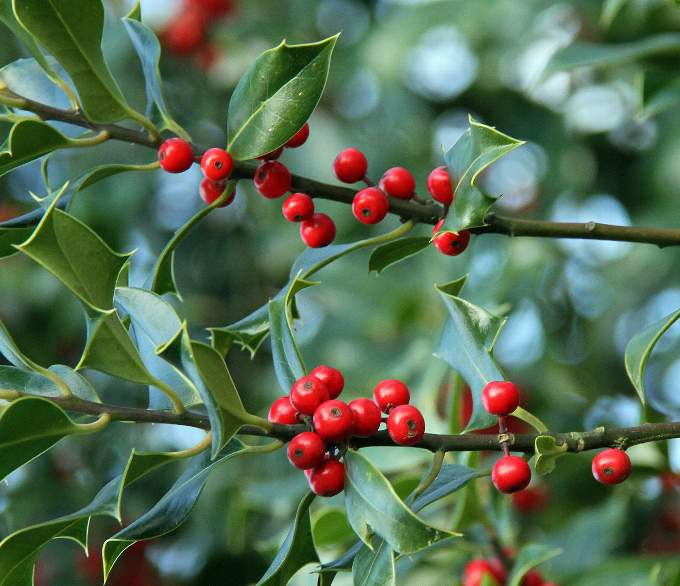Nature photographer Ray Roberts finds much of beauty in the winter garden - and describes how holly has always been associated with Christmas time.
In mid-winter, when most of the trees have lost their leaves, the evergreen holly still looks beautiful and really stands out. Holly has always been associated with Christmas time with their thick, waxy leaves that prevent water loss when the soil has been frozen rock hard, and with their contrasting bright red berries.
This explains why the leaves do not wither when hung up in the home as Christmas decorations. Quite a clever tree as well because its leaves on the lower branches have sharp spikes which prevent deer from eating them when food is a bit short. Higher up in the tree the leaves are spineless. However, in years gone by, holly leaves were chopped up and used to feed sheep during severe winters.
I remember when my siblings and I were young our Christmas tree was always a holly branch with berries on it. There were always plenty of holly trees around the farm and in the woods and most of the other families in Landrake also used a holly Christmas tree. After all, why cut down or even dig up a fir tree even if one could be found?
On one of our walks near the River Lynher we came across a group of cyclamen flowers out in bloom. This is a cultivated flower that is grown in gardens and I was reminded that the ground where I photographed them was once an allotment before it became disused and allowed to run wild. Very pretty to look at though, as were some bugle flowers that were growing nearby.
There are still plenty of fungi to be seen and we spotted several clumps of yellow coloured Calocera viscosa growing on the woodland floor. This fungus, about 3cm tall, grows on buried rotten wood and is said to resemble tuning forks, but looks a lot prettier.
We noticed a wood pigeon that was obviously looking for food and was poking around in some fallen leaves. I can’t say that the bird was starving, in fact it looked quite fat and very similar to those two that visit our garden every day.
When we get back from a walk the first thing we always do, after switching on the kettle, is to look out into the garden to see what wild life there might be at home. A lovely blue tit was perched on a staging post, which I had placed near the bird feeders to allow the birds somewhere to wait until one of the feeders becomes vacant.




